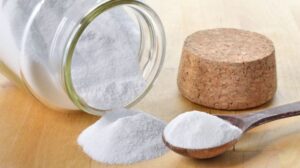It often begins with a quiet moment in front of the mirror. One day, you lean in and notice something different. Those fine lines around your eyes seem a bit deeper. Your skin tone looks uneven. The once-plump cheeks now carry faint reminders of time passing.
If you’ve started exploring anti-aging skincare, two names keep popping up like twin titans of youthful skin: Retinol vs Tretinoin. Both are powered by Vitamin A derivatives, both backed by decades of research, and both promise to turn back the clock on aging skin.
Yet, beneath the surface, they couldn’t be more different. One is gentle and widely available over the counter. The other is potent, prescription-only, and used by dermatologists worldwide as the gold standard in anti-aging treatment.
So which one is right for you?
As 2025 brings new research, smarter formulations, and clearer expert insights, this article takes you deep into the science, myths, benefits, and practical tips so you can make the best choice for your skin.
A Quick Overview: What Sets Retinol and Tretinoin Apart
Retinol is the approachable, over-the-counter option. It slowly converts to retinoic acid—the active form your skin needs—to stimulate cell turnover and boost collagen production. This conversion step makes retinol gentler, but also less potent, so results come gradually over months.
Tretinoin skips the conversion process entirely. It is retinoic acid in its purest form, which means faster results and higher efficacy—but also a higher risk of irritation. Available only by prescription in most countries, tretinoin is typically used under medical supervision for those serious about skin transformation.
Recent studies show tretinoin can reduce fine lines and sun damage in as little as 12 weeks, while retinol may take 6–12 months to achieve comparable results.
1. The Science Behind Their Anti-Aging Power
Decades of dermatology research prove that both Retinol vs Tretinoin stimulate collagen production, accelerate cell turnover, and improve skin texture.
However, tretinoin delivers 4–5 times stronger results when it comes to reducing wrinkles, fading dark spots, and smoothing rough texture at equivalent strengths.
- Retinol: Perfect for beginners, those with sensitive skin, or anyone looking for a gradual introduction to anti-aging skincare.
- Tretinoin: Recommended for stubborn wrinkles, significant sun damage, or when you want dramatic results under professional guidance.
Real-world data backs this up. A 2025 American Academy of Dermatology survey revealed:
- 68% of dermatologists recommend retinol for patients under 30 or those starting anti-aging routines.
- Tretinoin is favored for patients with moderate to severe photoaging or acne-related scarring.
The global retinoid skincare market exceeded $3.2 billion in 2024 and continues to grow rapidly as anti-aging demand skyrockets.
2. Side Effects: The Real Truth
Potency comes with a price, and in this case, it’s irritation potential.
- Retinol users often experience mild dryness, peeling, or redness during the first few weeks.
- Tretinoin can cause more intense irritation, especially at higher strengths, with common complaints including redness, flaking, and sensitivity.
A 2025 study in the British Journal of Dermatology found:
- 43% of tretinoin users reported initial irritation.
- Only 21% of retinol users experienced similar issues.
Pro Tips to Minimize Side Effects:
- Start with a low strength (0.25–0.5% retinol or 0.025% tretinoin).
- Apply only at night; retinoids degrade in sunlight.
- Use a gentle cleanser and thick moisturizer to maintain your skin barrier.
- Always wear SPF 30+ during the day; retinoids make skin more sun-sensitive.
3. How to Choose Between Retinol and Tretinoin
Here’s a quick decision guide to help you pick the right product:
| Skin Type / Concern | Retinol Recommended | Tretinoin Recommended |
|---|---|---|
| Sensitive or Dry Skin | ✔ | — |
| Early Fine Lines | ✔ | — |
| Deep Wrinkles or Severe Aging | — | ✔ |
| Acne + Aging Combination | — | ✔ |
| Preventive Anti-Aging | ✔ | — |
Most dermatologists suggest starting with retinol for at least 6 months. If you tolerate it well but want stronger results, you can then transition to tretinoin under medical supervision.
4. Layering Retinoids the Right Way
Using Retinol vs Tretinoin effectively isn’t just about picking the right product—it’s about pairing it correctly in your routine.
- Do not use exfoliating acids (AHAs/BHAs) on the same night unless instructed by a dermatologist.
- Niacinamide can reduce redness and improve barrier function when used with retinoids.
- Hyaluronic acid adds much-needed hydration to prevent dryness.
A 2025 Korean skincare study showed that layering tretinoin with centella asiatica serums reduced irritation rates by 32% compared to tretinoin alone.
If you’re building a nighttime routine, be sure to complement your retinoid with essentials like gentle cleansing, hydrating moisturizers, and barrier-supporting ingredients—our guide on creating a skin care routine that transforms your glow walks you through every step. It helps ensure your skin stays radiant and resilient, especially as you introduce powerful actives.
5. Myths vs Facts
Let’s debunk some common misconceptions about Retinol vs Tretinoin:
- Myth: Retinol thins the skin.
Fact: It thickens the dermis by boosting collagen production. - Myth: Higher concentration equals faster results.
Fact: Consistency matters more than strength. Overdoing it causes irritation, not improvement. - Myth: Retinoids stop working after a year.
Fact: Clinical studies show continued benefits for up to 24 months with ongoing use.
If hyperpigmentation is one of your main concerns, combining a retinoid with targeted treatments can speed up results—check out our dark spot correction guide for seven proven strategies that work in synergy. It’s packed with treatment options you can layer smartly for brighter, more even-toned skin.
6. Cost and Accessibility
- Retinol: Easily available in drugstores and online, typically ranging from $15–$100 depending on brand and formulation.
- Tretinoin: Prescription-only in most countries, costing $30–$200 depending on strength and insurance coverage.
With the rise of teledermatology in 2025, access to tretinoin prescriptions has grown by 40% worldwide, especially in the U.S., U.K., Canada, and Australia.
7. Dermatologist Recommendations for 2025
Most dermatologists now follow a “Retinoid Ladder” approach:
- Start with retinol 0.25–0.5% for 6 months.
- Move to retinol 1% or tretinoin 0.025% if tolerated well.
- For stubborn cases, tretinoin 0.05–0.1% under medical guidance.
Dr. Samantha Lee, a board-certified dermatologist, explains:
“Retinol remains the perfect starting point for anti-aging skincare, but tretinoin is the gold standard for transformation when used responsibly.”
Practical Tips for Using Retinoids
- Apply at night only to avoid sun sensitivity.
- Always follow with moisturizer to prevent dryness.
- Use SPF 30+ every morning. Retinoids and sun don’t mix.
- Be patient—skin cell turnover takes 28–40 days; results build over time.
Conclusion: Retinol vs Tretinoin—Which Wins?
Both Retinol vs Tretinoin deserve a place in the anti-aging conversation. Retinol offers a gentle, beginner-friendly introduction to skincare, while tretinoin delivers prescription-strength results for those ready to take things to the next level.
The right choice depends on your skin type, goals, and willingness to follow a consistent routine. What remains clear is this: retinoids continue to be the most researched, dermatologist-approved path to younger-looking skin in 2025 and beyond.



